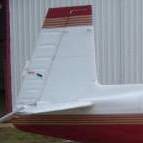Altimeter / ROC problem
-
Members Online
- banjo
- JLew
- Robm
- wood_fly
- exM20K
- hammdo
- TX-Champ
- eman1200
- Fly Boomer
- bluehighwayflyer
- ChuckSchneider
- DXB
- hobbit64
- TCC
- Rick Junkin
- Rmnpilot
- tperkins92
- kortopates
- Jeff Uphoff
- Deb
- takair
- PT20J
- Mooney in Oz
- N911TP
- Justin Schmidt
- Alan Maurer
- raymondscott0321
- Ibra
- Robert Hicks
- Sabremech
- Farmboy561
- Twing207


Recommended Posts
Join the conversation
You can post now and register later. If you have an account, sign in now to post with your account.